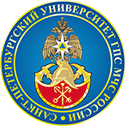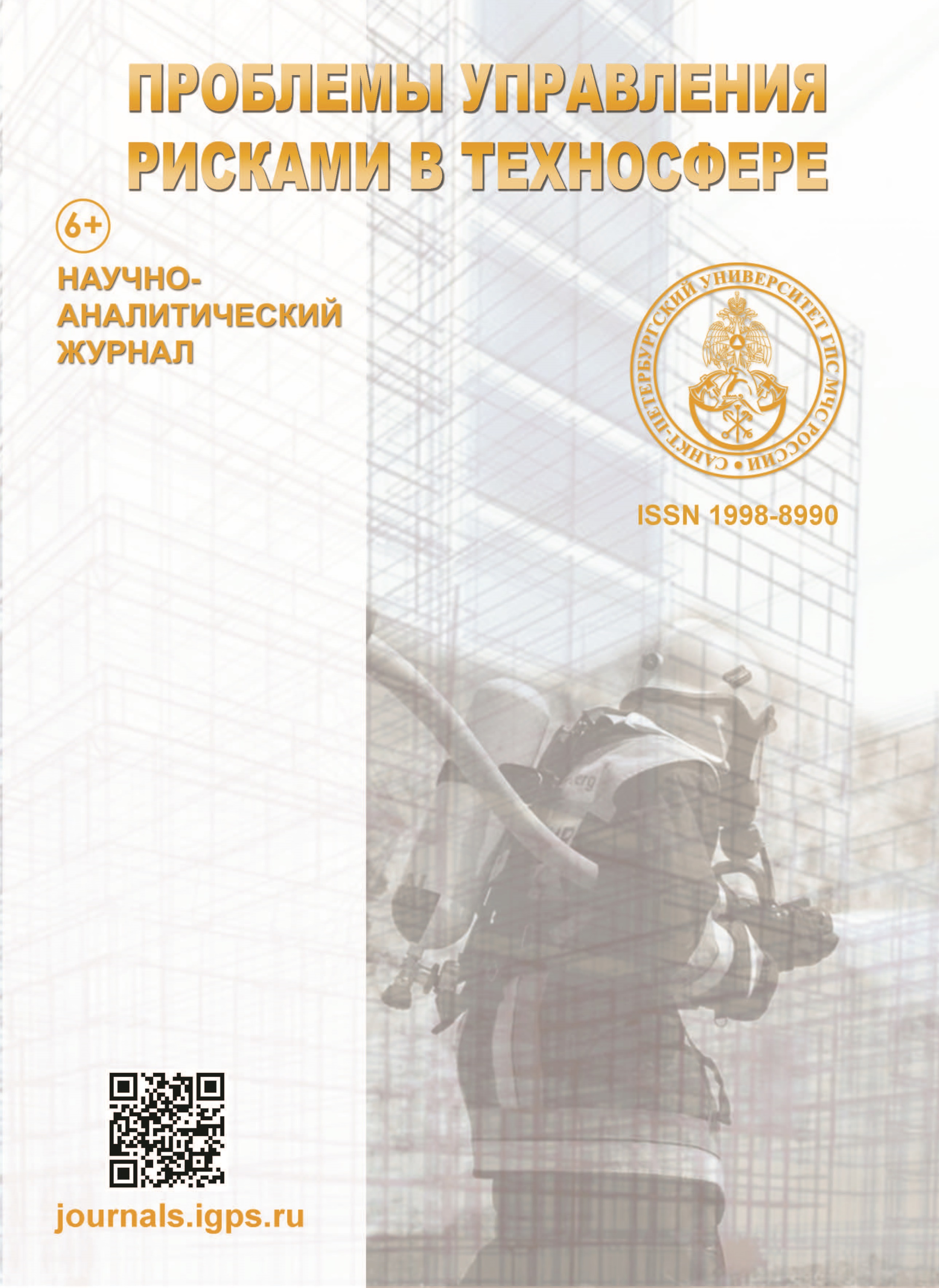Russian Federation
Russian Federation
St. Petersburg, Russian Federation
The main stages of the development of an emergency situation during the bottling of liquefied natural gas are presented. A tree of events has been formed in the event of the occurrence and development of a fire hazardous situation associated with the destruction of a tank or process pipeline with liquefied natural gas. Possible regimes of liquefied natural gas spreading on a smooth underlying surface and the formation of a variable power vapor source are identified. Models of liquefied natural gas evaporation are studied in relation to the composition and possible thickness of the filling layer. It is shown that under the assumption that the two phases are in thermodynamic equilibrium. The vapor phase density of liquefied natural gas can be obtained by solving the Peng-Robinson equation using the Klosek-McKinley method for a given pressure and temperature, which is based on an empirical correlation for the molar volume of the liquefied natural gas mixture. A model of a fast phase transition is formed based on the solution of the Van den Berg equation and an algorithm that automates the procedure for assessing the zones of influence of dangerous fire factors during an liquefied natural gas spill.
liquefied natural gas, fire hazards, gas-air mixture, liquefied natural gas strait, destruction of the liquefied natural gas tank
1. Abduragimov I.M., Kuprin G.N. Nereshennye problemy pozharovzryvobezopasnosti energoresursov (SUG i SPG) kak oborotnaya storona uspekhov energeticheskoj strategii Rossijskoj Federacii // Pozharovzryvobezopasnost'. 2014. T. 23. № 4. S. 42-50.
2. Metodika opredeleniya raschetnyh velichin pozharnogo riska na proizvodstvennyh ob"ektah, utv. prikazom MCHS Rossii ot 10 iyulya 2009g. № 404 (zareg. v Minyuste Rossii 17 avg. 2009 g. № 14541 (v red. prikaza MCHS Rossii ot 14 dek. 2010 g. № 649). Dostup iz sprav.-pravovoj sistemy «Konsul'tantPlyus».
3. Marshall V. Osnovnye opasnosti himicheskih proizvodstv. M.: Mir, 1989. 671 s.
4. Revision and experimental verification of the hazard assessment computer system models for spreading, movement, dissolution and dissipation of soluble chemicals spilled onto water: report / K.T. Dodge [et al.]. Springfi eld, VA: U.S. Coast Guard, 1983. CG-D-35-83.
5. Safonov V.S. Obosnovanie vozmozhnyh scenariev i ocenka posledstvij utechki SPG pri avarijnyh narusheniyah germetichnosti gruzovyh emkostej tankerov // Vesti gazovoj nauki: Povyshenie nadezhnosti i bezopasnosti ob"ektov gazovoj promyshlennosti. 2018. № 2 (34).S. 166-176.
6. May M.G., McQueen W., Whipp R.H. Dispersion of LNG spills // Hydrocarbon Processing. 1973. № 52 (5). S. 105-109.
7. Conrado C., Vesovic V. The infl uence of chemical composition on vaporization of LNG and LPG on unconfi ned water surfaces // Chem. Eng. Sci. 2000. № 55. S. 4549-4562.
8. Kuz'min A.A., Romanov N.N., Permyakov A.A. Modeli ispareniya szhizhennyh uglevodorodnyh gazov v raschete izbytochnogo davleniya vzryva // Nauch.-analit. zhurn. «Vestnik S.-Peterb. uni-ta GPS MCHS Rossii». 2019. № 3. S. 42-48.
9. Serdeenko E.S., Pahomov O.V., Baranov A.Yu. Matematicheskaya model' ispareniya szhizhennogo prirodnogo gaza i analiz vliyaniya iskhodnogo sostava na skorost' ispareniya // Nauchno-tekhnicheskij vestnik informacionnyh tekhnologij, mekhaniki i optiki. 2020. T. 20. № 4. S. 603-610.
10. Danesh A. PVT and Phase Behaviour of Petroleum Reservoir Fluids. The Netherlands: Elsevier Science, 1998. 388 p. DOI:https://doi.org/10.1016/s0376-7361(98)x8021-0.
11. Pozharovzryvoopasnost' szhizhennyh i gazoobraznyh goryuchih: sb. nauch. trudov M.: VNIIPO MCHS Rossii, 1990. 82 s.
12. Kochetov N.M., Kochetov A.N. Matematicheskaya model' processa paroobrazovaniya szhizhennogo gaza iz proliva // Modelirovanie riska. Problemy analiza riska. 2018. T. 15. № 1. S. 74-81.
13. Pozharovzryvobezopasnost' ob"ektov hraneniya szhizhennogo prirodnogo gaza. Processy ispareniya i formirovaniya pozharovzryvoopasnyh oblakov pri prolive zhidkogo metana. Metodiki ocenki parametrov / I.A. Bolod'yan [i dr.] // Pozharnaya bezopasnost'. 2000. № 4. S. 108-121.
14. Shebeko A.Yu. Chislennoe modelirovanie rasprostraneniya parov szhizhennogo prirodnogo gaza pri prolive na tverduyu poverhnost' // Pozhary i chrezvychajnye situacii: predotvrashchenie, likvidaciya. 2019. № 1. S. 36-41.
15. Ermak D.L. Results of 40m3LNG spills onto water // Heavy Gas and Risk Assessment. II. Battelle-Institute; Frankfurt am Main, Germany, 1983. P. 163-179.
16. Atallah S. Rapid phase transition // Topical report of gas research institute, GRI-92/0533 1997.
17. Havens J.A., Hazard J. Assessment of predictability of LNG vapor dispersion from catastrophic spills onto water // Mater. 1980. Vol. 3. P. 267-278.
18. Kooptan R.P. Analysis of Burro series 40 m3 LNG spill experiments // Journal of Hazardous Materials. 1981. A52. P. 119-140.







